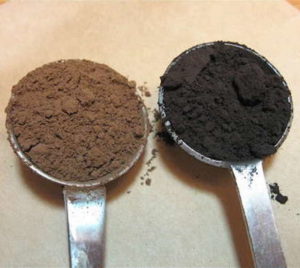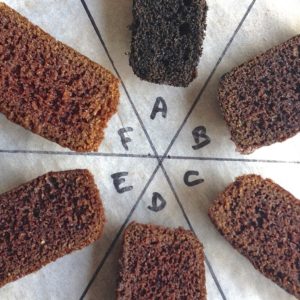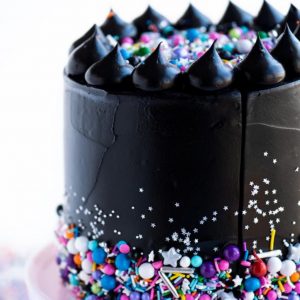Black Cocoa Powder – What Is It And How To Use It
Black cocoa powder has been around for a while. But on Australia market it is still pretty new product, and not many people know about it, or know how to use it. Two of the more common types of cocoa powders are natural and dutched, both which are widely used in food industries. The “ultra dutched” aka black cocoa powder, was until recently not very common in Australia. But it’s winning over all the bakers and decorators, and for a good reason.
Different Kind of Cocoa Powders
Any kind of cocoa powder (or cacao powder) comes from cocoa beans. Cocoa powder is the core of a chocolate's flavour, without any extra fat, sugar, or milk to get in the way.
Cocoa Powder vs Cacao Powder
There is lot of confusion over the cocoa and cacao powder, as people sometimes seem to think that two of them are exactly the same. And yes while they both do come from cocoa beans, it’s the actual process of making them, that makes them different. Also the nutritional value as well as their characteristics are very different.
Natural Cacao Powder
Cacao powder is made from the raw cocoa beans. It is made from cold pressed, finely ground organic cacao nibs and is often considered a "superfood" as it is filled with quality nutrients. Cacao powder has a rich, slightly bitter chocolate taste and is great for baking and making raw desserts. Unlike cocoa powder, cacao has not been processed at high temperatures and therefore has much higher nutritional value than cocoa powder does. It is rich in antioxidants, and contains also magnesium, calcium, copper, zinc and more.
Natural Cocoa Powder
Natural cocoa powder is powder from roasted cocoa beans. It’s acidic and bitter, with a very strong and concentrated chocolate flavour and a light brown colour. Natural cocoa powder is often used in recipes that use baking soda because the two react with each other and allow your baked goods to rise.
Dutch-Processed Cocoa Powder
Dutched cocoa powder (this also includes black cocoa powder) is cocoa powder that has been treated with an alkaline solution to neutralize acidity. Alkalising cocoa makes it darker in colour, milder in flavour, and dissolves easily into liquids. Dutched cocoa powder is neutral and because of that, it does not react with baking soda, so it’s often used in recipes that call for baking powder.

Black Cocoa Powder – How Does it Taste and Look
Black cocoa powder is simply a cocoa powder that has been heavily dutched or alkalised. Black cocoa powder has smoother non-bitter taste, and we think it actually tastes much less chocolate like, than the more common natural or dutched cocoa powders do. As the name suggests, black cocoa powder is much darker in colour than natural cocoa powder is – it’s extremely black. And it makes everything else black as well. So if you’re wearing light coloured clothing, be very careful when using it, as it does float around and colours everything on it’s way. This super black colour is achieved by heavier alkalizing, and no food colours have been used to create it. This means that black cocoa powder is amazing natural colouring agent, and is perfect for people with food allergies.
How do you bake with black cocoa powder?
Probably the best way to see the real difference is to bake with black cocoa powder and compare it with other more common cocoa powders.

The main thing you need to remember is that you can’t just swap natural cocoa powder with black cocoa powder. Since cocoa powder can be acidic (natural) or neutral (dutched), always stick with the type of cocoa called for in that recipe. You can easily swap natural cocoa powder for black cocoa powder, but doing other way around can result in a flat cake and sunken cupcakes. Black cocoa powder (as well as normal dutch cocoa powder) won’t react with baking soda to help your cake rise. So…
- With any recipe that is using baking soda you’ll want to stick with the natural cocoa powder.
- Recipe that calls for baking powder, you’re ok to swap the natural cocoa powder with black cocoa powder. Or use 50/50 ratio of both of the cocoa powders.
- And if you are using a recipe without any baking soda or baking powder at all, you can swap black cocoa powder for natural and vice-versa without any issue at all.
Another important thing to remember, when baking with black cocoa powder, is the fact that the processing makes black cocoa powder almost fat-free. So when baking, it’s always best to combine it with natural or regular dutch cocoa powder, so your bakings stay nice and moist.
Can I use Black Cocoa Powder to Colour Buttercream?
Simple answer is, yes you sure can. In fact this is pretty much must, in our opinion, when you need to make really black buttercream. Any cake decorator that has made black buttercream before, knows the struggle. You’d need to use the whole bottle of black food colouring, and would still probably only achieve dark grey colour. You will risk splitting your buttercream, the food colouring would alter the flavour of your icing, and we won’t even mention the stained teeth and mouth.

So when attempting to make black buttercream or any other frosting, here’s what we recommend. Since the black cocoa powder alone, can also change the flavour of your icing, we would suggest you use food colouring and cocoa powder together. We prefer to use new Colour Mill edible food colours, that are oil based and mix well with fats, meaning it’ll give you instantly much darker colour than liquid or gel food colours would. Colour Mill edible food dyes are super concentrated, so you need to add much less to get the super dark colour you’re after.
When making black buttercream, the most important thing is patience. Make sure you make it well ahead of time, as the colour of your frosting will deepen a lot. You’d need to attempt to make it at least a day ahead, preferably longer if possible. And like magic you have nice super black buttercream with the help of a black cocoa powder!

